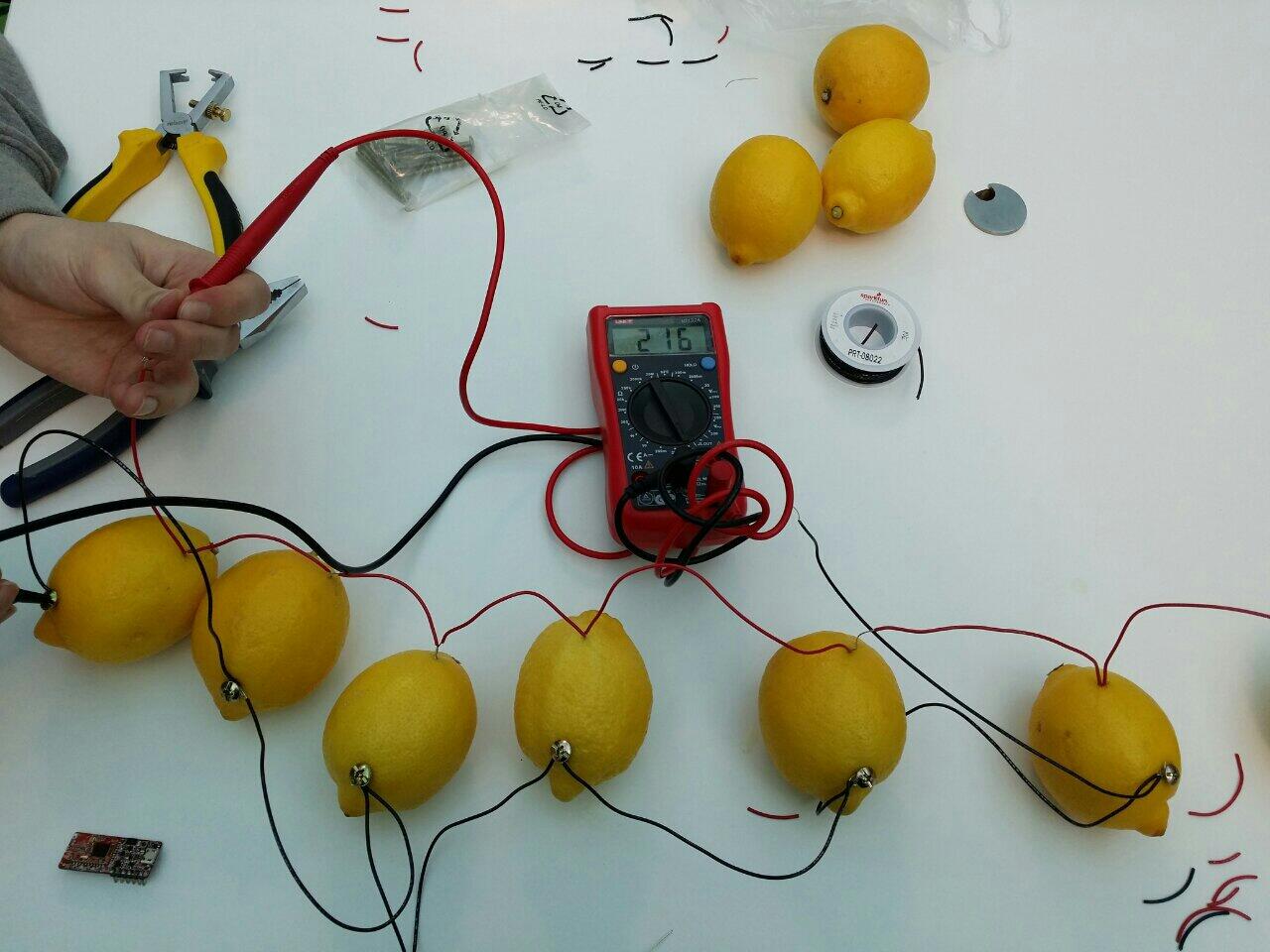This is a necropost - resurrected from the now defunct blog of a previous employer. Sadly, most of the photos have fallen down the memory hole. So use your imagination.

Energy efficiency is the next battleground for electronics. As the price of electricity soars, people will become less and less enamoured with charging their devices every single day. Even if cold-fusion brings us unlimited free energy - plugging your gadgets into a wall just seems so primitive!
That's where BlueTooth Low Energy (BLE) comes in. It's an ultra low powered transmitter which can be found in FitBits, iBeacons, pacemakers, and all sorts of other devices.
The key, as per its name, is that it uses very little energy. A simple watch battery should be enough to power an iBeacon for a year.
When Life Gives You Lemons…
Today was one of The Lab's regular hackdays. We challenge ourselves to spend a day playing with new technology, trying to get it to do something interesting.
I'm sure you remember from school building a simple power source using a lemon or potato. Zinc plated nails, copper wiring, an acid source, and - hey presto - a lightbulb comes on.
So, can we harness the awesome power of fruit to bring life to a little iBeacon?


We used RedBear Lab's BLE Mini board. It can be powered via USB (boring!) or via a direct electrical contact on the back.
Better BlueTooth Through Chemistry
It's been ages since any of us in The Lab did basic physics and chemistry at school, so we turned to the Mighty Internet for help.
With three lemons wired in parallel, we got approximately 0.5 Volts and 120μAmps.
According to Red Bear's support forum, we'd need about 3 volts and 340μAmps.
With 6 lemons, we were at ~200μAmps, closing in on the figure we needed.

It occurred to us that we may need to construct some kind of super-fruit mega battery in order to get the voltage up as well. I really wish I'd paid more attention in GCSE physics. Sorry Mrs Perkins…
10 is the Magic Number
With 10 C. limon in parallel, we hit 369μAmps! Perfect!

That still wasn't enough to get the BLE Mini board to power up - we needed to raise the voltage. But how?
Errr…. with difficulty…! Turns out it's really frickin' hard to get enough power out of a bunch of lemons to power modest hardware.
So we did what any enterprising startup does - pivot!
Power Extreme!
Ok, so can our juicers deliver sufficient juice to act as an emergency battery for your smartphone?
We found the lowest powered phone we could - the GeeksPhone Keon - running FireFox OS.
In keeping with our fruit theme, we butchered an old BlackBerry charger - and got to work…
Wires stripped, plugged into our lemon battery… What was the result?
Errr… The square root of nowt! Nothing happened. The power wasn't high enough for the phone's charging circuitry to register anything.
We grabbed a Nexus 5, installed a power monitor widget, and tried again.
Ooooooh!
This is the very definition of trickle charging. The amount of energy from 10 lemons, zinc plated nails, and copper wire is just enough to give you a few more minutes of talk time - nothing more. In a MacGyver situation, you're probably better off squeezing the lemons into your enemies' eyes.
Lessons Learned
Hackdays are a great way of playing about with technology and having a bit of experimental fun.
It's temping to think BLE is so efficient that it can be powered from harvested kinetic energy and stray WiFi beams - that's not the case. Modern battery technology is pretty complex - and that's why tiny button cells can power modern electronics and a whole bunch of lemons doesn't even get close.
One of the reasons The Lab exists in O2 is to develop a culture of "Fast Failure". We didn't spend millions of Euros and half-a-dozen months in planning meetings, requesting proposals from suppliers, and updating PowerPoint decks to do this - instead, two of us spend half a day actually trying to build something and finding out pretty quickly that it wasn't going to work.
For those of you wondering just how much of your monthly bill we spent on this? The cost was a couple of quid for the nails and wire, and we had the multimeter already. The lemons cost £3.00 for 10. I wonder if I should have splashed out on organic ones…. ;-)
What's Next
It's possible to power Xmas tree lights from hundreds of Brussels Sprouts. Would it be possible to set up a "Charge your Apple with apples" stand at one of O2's larger stores? Sure! It could make a great marketing stunt - and teach people a little basic science - but, for now, I'll stick to my wall socket.
Toodle pip!
What links here from around this blog?